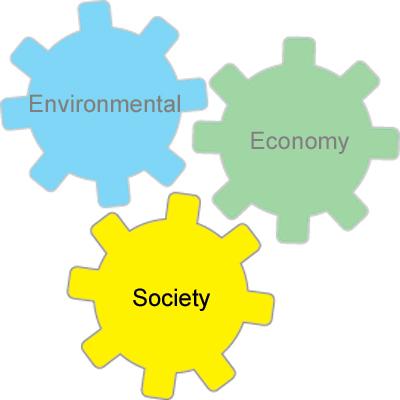Societal Tools to Support Sustainable Decision Making

| Models | Purpose | Who Should Use It |
|---|---|---|
| Decision Analysis for a Sustainable Environmental, Economy and Society (DASEES) | Use this model to help make decisions for communities by building common understanding of complex problems and identifying solutions that are rigorous, inclusive, defensible, and transparent. | EPA's Office of Research and Development researchers, Regional and Program Offices tribes, and municipalities |
| GLIMPSE Model | Use this model to find national energy-system scenarios that simultaneously achieve air quality, ecosystem protection, and climate change mitigation goals. | EPA's Office of Air Quality Planning and Standards, and Regional offices |
| Integrated Climate and Land-Use Scenarios (ICLUS) Online | Use this model to understand how climate change affects land use and housing | EPA scientists Regional and Program Offices, and universities |
| Stochastic Human Exposure and Dose Model for Multimedia, Multi-Pathway Chemicals (SHEDS) | Use this model to estimate range of exposure in a population and enhance dose estimates. From this, communities can identify potential risks. | Regional and Program Offices states, and anyone making chemical safety decisions |
| Virtual Beach with watershed model framework | Use this model to determine if bacteria, microorganism, or virus levels or weather conditions mean that a local beach should be closed. | State and local managers concerned with accurate beach closures |
| Tools | Purpose | Who Should Use It |
|---|---|---|
| CANARY Event Detection Software | This tool works in conjunction with water quality sensors to detect hazardous contaminants, or abnormal water quality conditions, in drinking water. | Water quality managers |
| Community Focused Exposure Risk and Sustainability Tool (C-FERST) | Use this tool to understand geographically what potential environmental and public health exposures and risks are in your community. | Risk assessors and community project leaders |
| EPA Expo-Box (Exposure Toolbox) | Use this compendium of exposure assessment tools to find exposure assessment guidance, data bases, models, key references, and other resources. | Exposure assessors and local, national, and international governments |
| Incident Waste Assessment & Tonnage Estimator (I-WASTE) | Use this tool to identify best practices or perform pre-incident planning for management of waste following a chemical, biological or radiological incident, natural disaster, or a foreign animal disease outbreak. | Waste management professionals, especially those involved in planning for or managing waste following a significant incident |
| PROcEED Web Tool | Use this tool to estimate exposure based on a population's biomarker concentration. | Chemical risk assessors and others who are interested |
| Tribal-Focused Exposure, Risk, and Sustainability Tool (T-FERST) | Use this tool to understand geographically what potential environmental and public health exposures and risks are in tribal communities. | Risk assessors and community project leaders |
| Waste Estimation Support Tool (WEST) | Use this tool to identify approaches for remediation following a radiological incident. | Waste management and remediation professionals, especially those involved in planning for or managing contamination following a significant radiological incident |
| Community Cumulative Assessment Tool (CCAT) | This tool is in development. Use this tool to collect and organize information related to health and environmental risks, and to develop a to-do list of actions to reduce those risks. This tool supports the decision-making process on what to do about the many factors in the environment. |
Anyone with a fair level of public health and computer-based knowledge can use this tool to help inform their decisions |
| Databases | Purpose | Who Should Use It |
|---|---|---|
| EcoToxicology Database (EcoTox) | Use this database to predict potential toxicity and inform chemical risk assessments with respect to aquatic and terrestrial organisms. | Chemical risk assessors and program officers |
| Exposure Factors Handbook | Use this database to find the human behaviors and characteristics that may be necessary when characterizing exposure to environmental contaminants. | Environmental consultants and exposure and risk assessors |
| Support for Rapid Environmental Risk Assessment (SERRA) | Use this database to find human risk-based biological and chemical threat information consolidated from a variety of resources. This information is crucial to either preparing for and in response to a chemical or biological environmental contamination event. | Emergency planners and responders; risk assessors |
